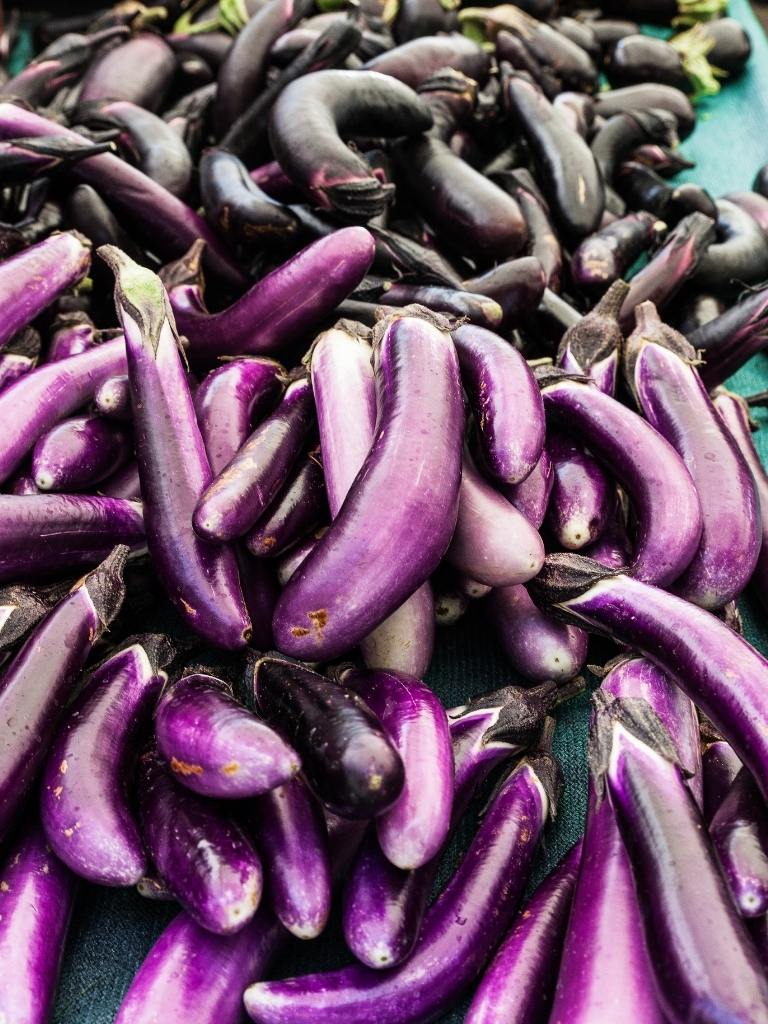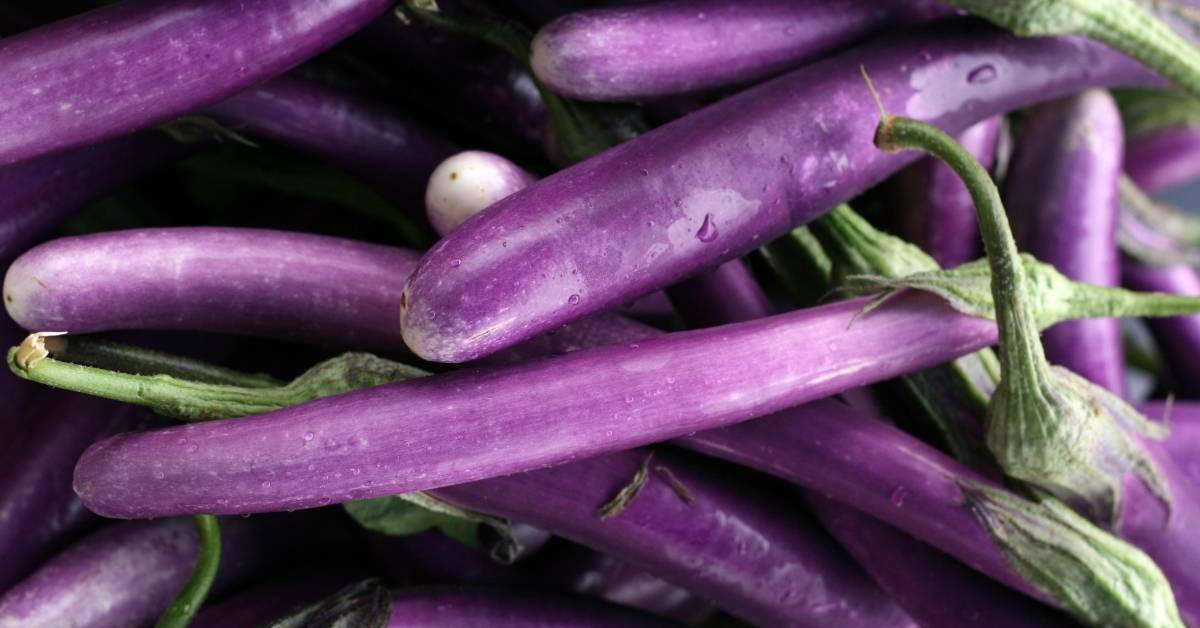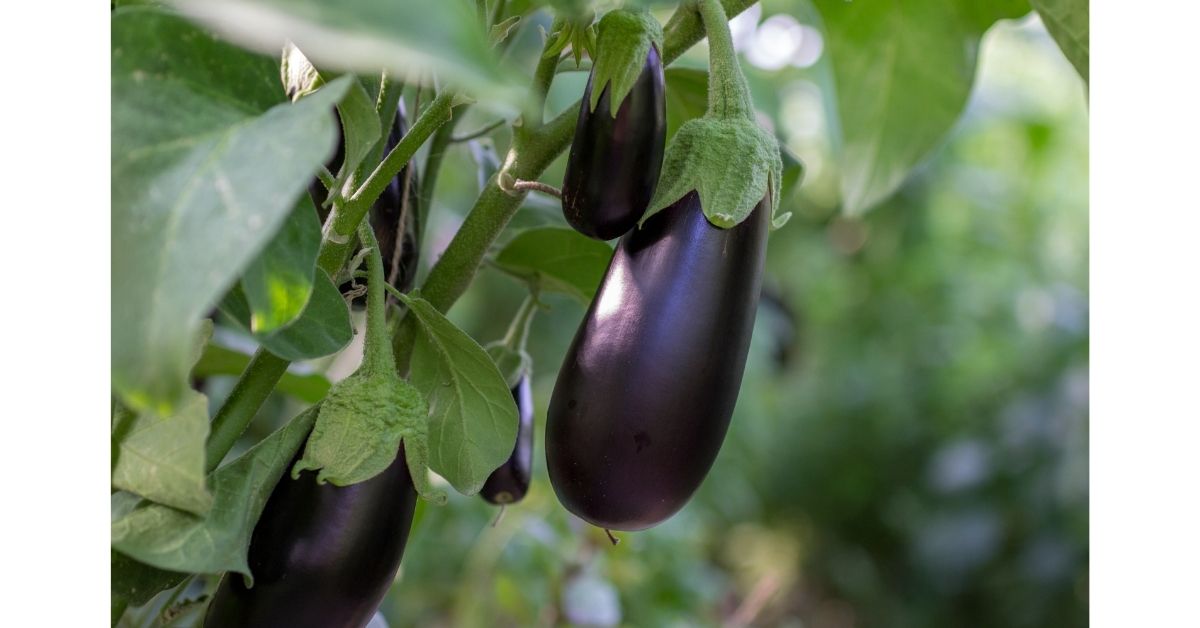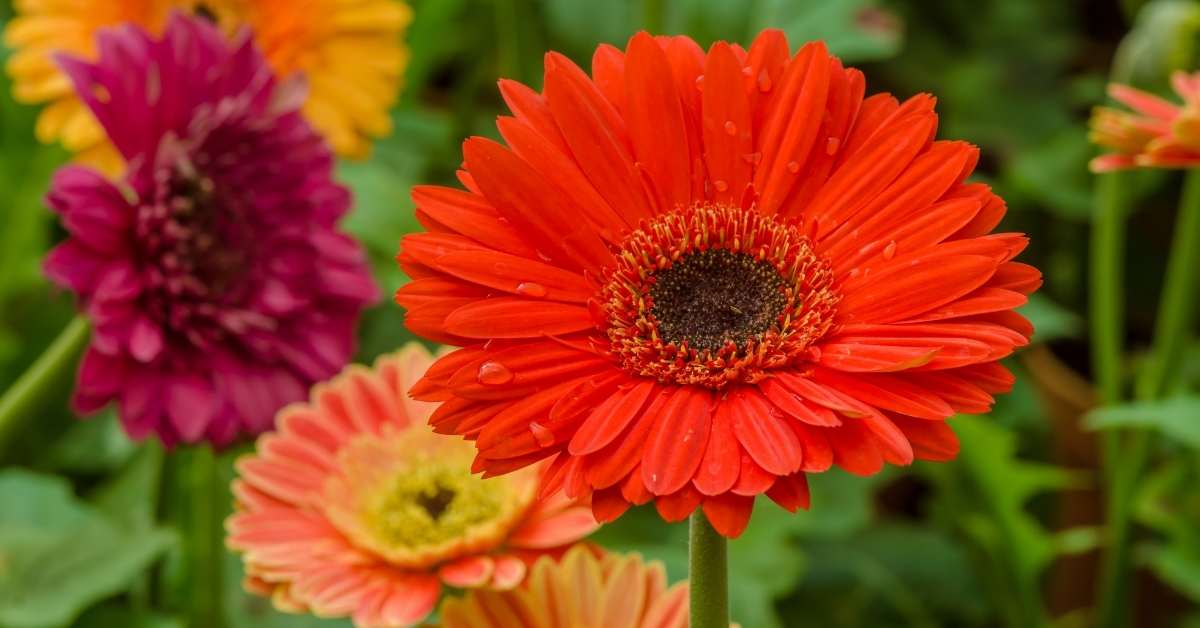Japanese eggplant is a bit different than other common eggplant varieties. It is considerably smaller, thinner, longer, and much more tender. It is a striking purple-black color that is equally attractive in the garden as it is tasty in many dishes.
Here is some useful information on how to grow and when to harvest Japanese eggplants in your home garden.
Japanese eggplant is becoming quite popular with gardeners due to its much smaller size and the fact that it can be grown from seed. Also, contrary to popular belief, you should know that it is a fruit, not a vegetable.
Eggplant History
Original varieties of eggplant are native to Pakistan and India and became domesticated around 4,000 years ago. In 500 B.C., it was introduced to China, where they hybridized their own particular delicious varieties of various colored and shaped fruit.
Between the 9th and 12th centuries, eggplant migrated to Egypt and the Middle East. Once the Spaniards were introduced to it, the plant became famous across Europe. It was called “The Apple of Love” and was believed to be an aphrodisiac. When the Spaniards traveled, they took it with them and introduced it to South America in 1650.
Later, in 1805, Thomas Jefferson was given a plant from a friend in France, and that is how the plant finally came to be grown in America.
When Is the Best Time to Plant Japanese Eggplant?
Japanese eggplants are a warm-season crop that cannot withstand frost or freezing conditions; they must be grown in warm soil with at least 75 degrees Fahrenheit daily. Because eggplants have a long growing season, you’ll want to start them indoors approximately eight weeks before the last frost date in your area.
How To Grow Japanese Eggplant
To grow Japanese eggplant at home, you will need seeds, soil, containers, compost, fertilizer, mulch straw, and manure. You want to start your Japanese eggplant growing indoors about six weeks before the estimated last frost date.
- Fill your containers up with soil.
- Sow your plant seeds right at the soil’s surface and water thoroughly.
- Set your containers in a nice sunny, warm location to allow them to germinate. This will generally take around two weeks.
- Work the manure and compost into the designated area of your garden to prepare the bed for the seedlings. These plants require extremely rich and very well-drained soil. Also, when choosing a location, be sure that the spot offers them plenty of sunshine.
- Plant the Japanese eggplant seedlings about a foot and a half apart in neat rows after there is no longer the danger of a hard frost. When you dig your holes, be sure that they are deep enough to cover the root ball completely.
- Once a month, you should add a general-purpose fertilizer.
- Japanese eggplant needs a lot of water. These are plants that you want to water once a day and never allow the soil to get completely dry.
- Mulch around your plants using a straw to help retain moisture and control weeds.

When to harvest Japanese Eggplants?
Your plants will be ready to harvest between 65 and 80 days. You will know that they are ready when they reach the desired size and color. A ripe Japanese eggplant will offer dark, glossy skin. They will continue to produce usually until the first frost.
Eggplants are ready to harvest when the skin is glossy and free of stains, regardless of variety. It easily yields to the touch of a finger. The color of eggplant varies depending on the type. It comes in a variety of colors, including dark purple, white, and green.
The eggplant’s inside must be pale, nearly white. If the fruit is green, that means it was picked too soon. The deadly solanine level of the aubergine is then too high, and it should not be ingested. The eggplant is overripe and bitter if the flesh is already browned.
How to store eggplants?
It is best to process eggplants directly.
Eggplants lose their crispness relatively quickly after being harvested, but they can be kept for two or three days without any problems. After that, they usually get a little wrinkled and no longer look fresh, but they can still be processed. Since they love warmth, it is better not to put them in the refrigerator.
Try to keep them separate from apples and tomatoes. The gas ethylene, which both of them emit when they ripen, spoils the aubergines more quickly.
What’s the Difference Between a Globe and a Japanese Eggplant?
Japanese eggplants and globe eggplants are two eggplant cultivars that differ in numerous ways:
Because globe eggplants have a slightly bitter flavor, chefs prefer to salt or season them when preparing them. Japanese eggplants have a softer, sweeter flavor and don’t require as much salt or seasoning as other eggplants.
Globe eggplants have thick and robust skin that chefs usually remove before cooking. Japanese eggplants, on the other hand, have delicate, thin skin that does not require peeling, making them simpler to consume.
Globe eggplants are a common American eggplant with a rounded end that grows huge and hefty. Long and thin fruits resembling dark-purple cucumbers rather than globe eggplants characterize Japanese eggplant types.
How To Tell If A Japanese Eggplant Is Spoiled
Japanese eggplant and all other varieties are known to spoil quickly. This not only compromises the taste but the nutritional value as well. If you know the difference between a spoiled or fresh eggplant, it can literally make or break your meal.
- Examine the skin of the fruit; it should be shiny. A faded or dull eggplant may be an indication that it has spoiled.
- Look for a bright stem and cap. If it is not bright and healthy, then the eggplant is probably not fresh.
- Press and check for firmness. If you press on the eggplant and an indentation is left behind, this is a good indication that the fruit is spoiled.
- Look for any signs of decay or bruises on the stem and skin.
- Hold the Japanese eggplant and observe its denseness. Fresh fruit will feel heavier.
- When you cut it open, look for spongy meat and healthy seeds. If it is moldy, mushy, discolored, or has a strong odor, it should be thrown away.


